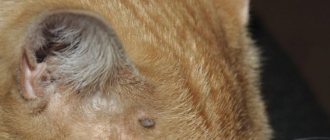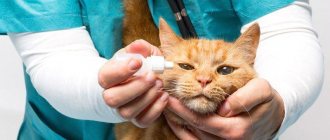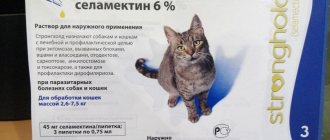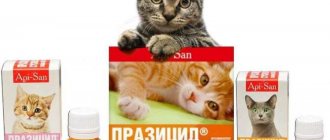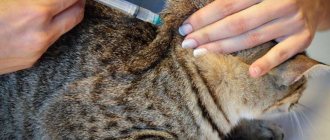Release form
Iris drops are produced in 10 ml polymer dropper bottles, closed with a sealed rubber stopper with an aluminum tip. They go on sale in cardboard packages. Inside each box there are instructions for use.
The medicinal solution has a transparent consistency, the color is light yellow, there are no heavy impurities or sediment.
Operating principle
The active ingredient gentamicin sulfate is easily and quickly absorbed from the mucous membrane and penetrates inside the cornea. Thanks to the pronounced antibacterial effect, microorganisms that cause the disease are destroyed throughout the entire area of the eyeball.
The antibiotic relieves the inflammatory process, accelerating the healing of injuries and infectious lesions of the conjunctiva and cornea. It has high activity against gram-negative and gram-positive cocci, including Pseudomonas aeruginosa.
The advantage of the product over its analogues is that it quickly and completely enters the intraocular environment, where it is distributed throughout the eyeball.
The effectiveness of treatment is achieved due to the specified uniform distribution - the medicine reaches all areas of the organ of vision, even hard-to-reach ones. Due to this property, the drug is prescribed for many eye pathologies and deep mechanical damage.
Will eye drops work as well as glasses?
Recent research suggests that the effects of miotic drops begin in about 30 minutes and last between three and seven hours. After the corrective effect wears off, you need to put drops into your eyes again. On the other hand, the effect of eye drops to soften the lens can last several years. Patients using any type of these drops are able to see the 7th line at close range - approximately the same results are achieved when using glasses. Some patients using eye drops began to experience headaches, decreased night vision, or problems visually distinguishing an object from the surrounding background.
Some patients using drops used a combination of miotic drops and lens softening drops. Others have been able to benefit more from one type of drop than another.
Photo: unsplash.com
Indications for use
The instructions indicate that Iris drops for cats are prescribed to animals diagnosed with the following diseases:
- conjunctivitis, occurring in acute or chronic forms;
- conjunctivitis complicated by purulent discharge from the eyes;
- corneal erosions and ulcers;
- meibomitis;
- blepharitis;
- keratitis;
- a thorn formed as a result of infection;
- septic iridocyclitis;
- allergies to chemicals and other irritants, accompanied by swelling of the eyelids;
- other diseases.
Veterinarians also prescribe drops in preparation for surgery and in the postoperative period.
It is important! Treatment will not give the expected effect if visual impairment is one of the symptoms of chlamydia, peritonitis, mycoplasmosis and other pathologies. In this case, it is necessary to treat the underlying disease, and in parallel, the veterinarian can prescribe Iris drops.
Types of eye diseases in cats
Cats can suffer from several types of eye problems.
Inflammatory eye diseases
Inflammatory diseases are caused by infections, injuries, hypothermia, allergies, and pathologies of the endocrine system.
The eyelids can become inflamed - such diseases include conjunctivitis and blepharitis. The mucous membranes of the eyelid swell and turn red, sometimes they can turn outward. In this case, purulent discharge from the eyes and profuse lacrimation are observed. With dry keratoconjunctivitis, on the contrary, the lacrimal glands cease to secrete the required amount of moisture.
The first symptom is often redness of the eyelids
Sometimes the cornea itself becomes inflamed - for example, with keratitis. Symptoms include watery eyes and squinting. The cornea becomes matte and shines unnaturally. Dark or cloudy spots and purulent discharge may appear.
Corneal injuries
A cat's eyes can be damaged during a fight, from bruising or being hit by a foreign object. This is not only dangerous in itself, but also leads to the penetration of pathogenic microorganisms into tissues.
Excessive lacrimation
Increased production of tears without signs of inflammation may be a symptom of the following problems:
- narrowing of the eye canal;
- allergy;
- cold;
- parasite infection.
Some breeds are naturally prone to excessive tearing.
Excessive tearing may be a symptom of parasite infestation
Other problems
Among other things, your pet may suffer from the following diseases:
- Turn of the century. In this case, the eye is irritated by the eyelashes pressing against it. The problem can only be solved surgically.
- Glaucoma. Increased pressure inside the eye. Accompanied by swelling of the eyelids and clouding of the cornea.
- Cataract. Cataract. It is more often observed in cats over 7 years of age.
- Prolapse of the eyeball when it comes out of the shaved area and is completely or partially outside the eyelids. Requires immediate veterinary attention.
Mode of application
The dosage of the medicine and the duration of its use depend on the purpose of use:
- Prophylactic dose – 1 drop 4 times a day for 3 days. For some cats, 1 drop twice a day is enough. The frequency is selected individually by a specialist, depending on the health and age of the animal.
- Treatment of eye pathologies lasts from 7 to 10 days. Cats need eye drops 4 times a day, a single dosage is 1 drop, regardless of the pet’s weight.
- For inflammatory processes caused by foreign objects, Iris is given 1 drop four times a day.
The veterinary product has a prolonged effect, but procedures should not be skipped - eye drops, like most medications, give a cumulative result.
It is recommended to apply them at regular intervals, ideally at the same time. It is not recommended to interrupt the course, but if a day is missed for objective reasons, it is advisable to urgently resume treatment. Dosages are the same as before the break.
No special reactions to the solution were identified, but individual intolerance to one or more components cannot be excluded. If your cat's eyes are red or very watery, or purulent discharge appears, you should consult a clinic.
The owner should know how to properly instill the drug into a pet:
- First, you need to wipe your eyes, eyelids and the area under the eyes with a cotton swab, previously soaked in a special pharmaceutical solution. It can be replaced with herbal decoction or boiled water.
- The crust, dried secretions and growths are removed gradually - first you need to soak them.
- It is better for two people to put drops in a cat’s eyes: one holds the animal, the other administers the drug. The composition should get into the area of the lower eyelid - to do this you will have to pull it off with your fingers and hold it.
- Immediately after the administration of Iris, there may be redness and burning - a short-term reaction to an external irritant. You should not allow your cat to scratch its eyes - the drug will not work.
- The drops take effect within 3-5 minutes. All this time, the owners need to calm the animal by stroking it and stop attempts to escape.
- Afterwards, be sure to wash your hands.
Tobriss
Broad-spectrum antibiotic from the aminoglycoside group. At low concentrations it acts bacteriostatically (blocks the 30S ribosomal subunit and disrupts protein synthesis), and at higher concentrations it acts bactericidal (disrupts protein synthesis and the permeability of the cytoplasmic membrane of the microbial cell, causing its death).
Microorganisms sensitive to tobramycin:
Aerobic gram-positive microorganisms: Corynebacterium, Staphylococcus aureus (sensitive to methicillin); coagulase-negative species of staphylococci (methicillin-sensitive, including penicillin-resistant strains). Gram-negative bacteria: Acinetobacter species; Escherichia coli; Haemophilus influenzae; Klebsiella spp.; Moraxella spp.; Morganella morganii; Pseudomonas aeruginosa.
Tobramycin-resistant microorganisms:
Aerobic gram-positive microorganisms: some Staphylococcus species resistant to methicillin with a resistance rate of up to 50% of all staphylococcal species in some European countries; Streptococcus pneumoniae and most strains of group D streptococci.
Some gentamicin-resistant strains remain highly sensitive to tobramycin.
The emergence of resistance to tobramycin is the result of modification and inactivation of antibiotics by enzymes present in the periplasmic space of bacteria. There are three different mechanisms by which aminoglycosides are inactivated: acetylation of amino groups, phosphorylation of hydroxyl groups, and adenylation of hydroxyl groups.
Variable sensitivity between aminoglycoside antibiotics relative to other classes of modified enzymes is also possible. The most common mechanism of acquired resistance to aminoglycosides is inactivation of the antibiotic by modification of plasmids and transposon-encoded enzymes.
Below are the critical minimum inhibitory concentration (MIC) values that separate sensitive microorganisms S (MIC <4 mg/ml) from conditionally sensitive microorganisms and conditionally sensitive microorganisms from resistant ones, R (resistant) ≥8 mg/ml. Resistance may vary geographically for relevant microorganism species, so it is desirable to have local information regarding resistant microorganisms, especially when treating severe infections.
| Microorganism | Minimum inhibitory concentration (mg/ml) |
| Staphylococcus aureus | 0.2 |
| Streptococcus pyogenes | 12.5 |
| Streptococcus pneumoniae | 25 |
| Pseudomonas aeruginosa | 0.6 |
| Escherichia coli | 1.2 |
| Klebsiella pneumoniae | 0.8 |
| Proteus mirabilis | 1.2 |
| Proteus vulgaris | 1.2 |
| Proteus morganii | 1.2 |
| Proteus rettgeris | 2.5 |
| Haemophilus | 0.5 |
| Neisseria | 5.0 |
Contraindications
The only absolute contraindication for the ophthalmic solution is intolerance to the main or auxiliary substances in the composition.
You should refrain from using it if the cat is pregnant or nursing offspring.
In rare cases, an allergic reaction is possible. If you have characteristic symptoms, you should contact the nearest clinic and take the drug and packaging with you.
The results of clinical trials of Iris showed that there are no side effects when using it, and it does not enter into chemical reactions with food and other medications.
It is important! The main condition for recovery is strict adherence to the dosage and treatment only as prescribed by a veterinarian. Making an independent decision to increase or decrease the number of procedures can cause complications.
Description of the drug
The drug in the bottle looks like a yellowish solution without sediment.
© shutterstock
The product contains gentamicin sulfate, which effectively fights most pathogenic bacteria. The exceptions are their anaerobic varieties, viruses and protozoa.
Thanks to the optimal ratio of salts in the drug, it perfectly treats the cat’s eyes and maintains the positive effect for a long time.
Contraindications to the use of this product are individual intolerance to the components of the drug or pregnancy of the cat.
Iris is a low-hazard substance; no cases of side effects have been identified.
Owner reviews
Elena, Vitebsk, Belarus:
“Last fall we picked up a kitten from the street. About a month later we saw that one eye was not opening completely. We contacted the veterinarian. He prescribed Iris to our cat. Dropped for 5 days 3 times. Improvement was noticed within a couple of days. It’s convenient that the drop forms quickly, so one person can handle the procedure.”
Greta, Tolyatti:
“I noticed that my 5-year-old cat has lumps in the corners of her eyes. This has happened before, but this time they were large and caused discomfort. On the advice of the doctor, I bought Iris - I dripped it twice a day, the cat reacted calmly. What will I say? Effectively, after a week the problem was forgotten. I was confused by the fact that this is an antibiotic, there are additives in the composition. Fortunately, our treatment went without complications.”
How to put drops in a cat's eyes
Medicines are instilled directly into the animal's eyes. First of all, try to calm the cat down. Place her on your lap, pet her, talk quietly and calmly. If the animal behaves nervously and aggressively, you can carefully wrap it in a towel.
If there is purulent or mucous discharge on the eyes, clean them with a cotton pad soaked in lotion.
In some cases, preliminary purification is carried out using the medicine itself. The admissibility of this action is indicated in the instructions.
Then place one palm on the cat's head, lift it up and use your fingers to open the eyelid. Place one drop and allow your pet to close the eye to distribute the product. Another way is to squeeze a few drops of the drug into the corner of a closed eye, then open the cat’s eyelids.
Repeat the procedure if necessary. At the end, praise your cat and give her a rewarding treat.
The break between instilling different types of drops should be at least 20 minutes.
Hygienic lotions are not instilled, but applied to a cotton pad or napkin, after which they wipe the cat’s eyes from the inner corner to the outer.
Please note that a number of hygiene products can cause staining or discoloration of the fur around the eyes, which is especially undesirable for show animals.
In addition to special products, you can use strong black tea or saline solution to clean your eyes.
Chamomile decoction is not recommended. One day, my relatives’ Persian cat began to “cry” more than usual, and they tried to solve the problem with chamomile - but after that, in addition to profuse lacrimation, baldness of the area around the eyes was added. The relatives were frightened, suspecting a skin disease, but, as the veterinarian explained, the cause was precisely the decoction - the substances contained in chamomile, when applied externally, lead to hair loss.
Most cats have their eyes cleaned once a day in the morning. For breeds with a natural tendency to tear, such as Persians or Britons, this procedure may be required more often, up to 2-3 times a day.



